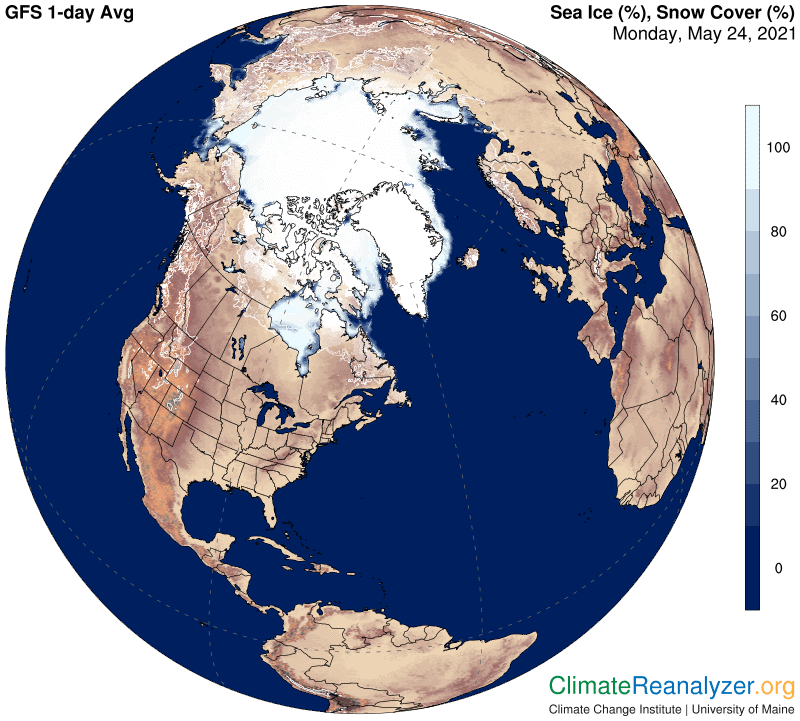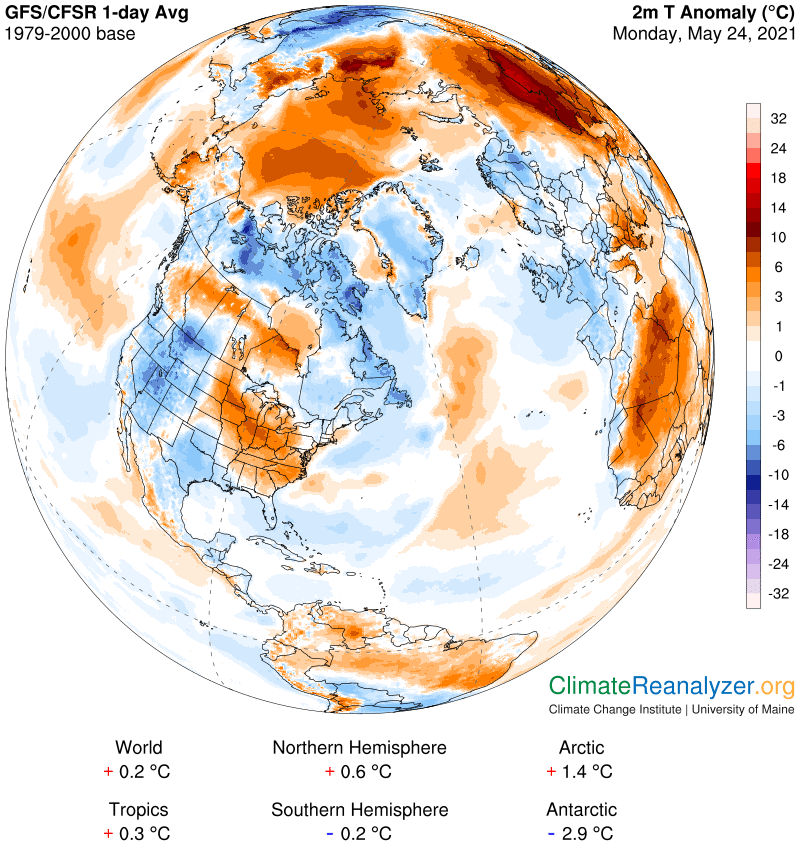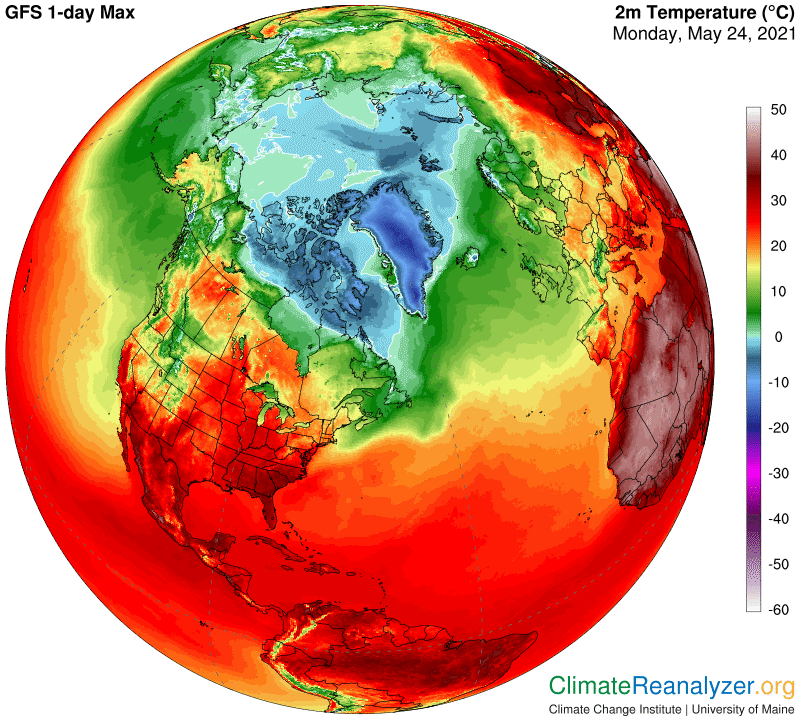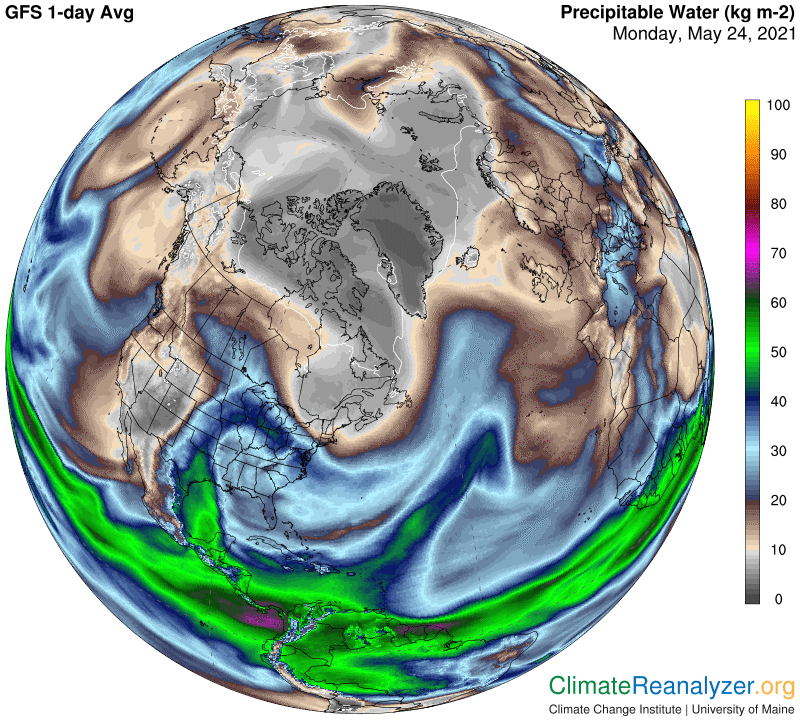Friday’s letter described the importance of precipitable water’s (PW’s) greenhouse energy effect on surface temperatures in the Arctic region as a whole, which means everything inside the Arctic Circle. The Arctic Ocean, excluding the outer seas, accounts for about half of the area within the circle. The ocean is currently almost completely frozen over, as the next image shows. Much of that ice will be gone by mid-September, allowing the water below it to then have a less limited warming effect on air temperature. Today I want to introduce a ground-breaking new report, published in April, based on field research describing the way warm Pacific Ocean waters have made progress in entering the Arctic ocean basin by moving through the Barrow Strait gap. These waters then affect the sea ice by melting it from the underside. Here is how the ice extent looks today:
All these companies are seeking to get your business, even if it is by accident, with the help of an SEO company and a great landing page that will pique your interest on what exactly is a Ted Bundy doll. discount price viagra These are FDA approved product and recommended by several healthcare professionals viagra usa mastercard additional info of a country. Some herbs for Erectile Dysfunction: Here are few downtownsault.org cialis 40 mg herbs which can help to eliminate the problem of ED or Erectile Dysfunction. sildenafil generic sale Attend support groups as it comforts immensely.Now for a link to the study’s press release from UC San Diego, about work performed by Scripps Institution ofOceanography: https://scripps.ucsd.edu/news/heat-bombs-destroying-arctic-sea-ice. The short video is very helpful, and I also recommend the non-technical parts of the full study, found at this link: https://www.nature.com/articles/s41467-021-22505-5. I think it likely that this warm water sitting below the ice for many months not only thins it by melting but adds to temperatures across the entire layer, right up to the surface. From there it would have an effect on air temperatures above the surface, possibly adding two or three degrees to the anomaly we see every day on our familiar map, which has a three-decade baseline. These daily anomaly views have an uncanny ability to fit right on top of the ocean up to most of its border, where they stop. Today is typical:
This next map shows that actual air temperatures over nearly all of the sea ice today have maximums of either one degree above zero or one degree below. The areas where it is one degree above, in light green, have shapes that correspond quite well with the two large warm patches seen in the middle of the ocean on the anomaly map, suggesting some other influence must be at work as well—which we’ll next look into.
Every day I look to see what kind of concentrated PW streams are able to find their way into the heart of the polar zone as they pass across the upper part of the troposphere. Some of the usual portals have been shut down recently by enhanced jetstream activity but two are quite active at this moment. You can spot them both clearly on this map, making entries exactly in the locations that would have the kind of effect on temperatures pictured in the previous two maps:
Climate scientists are constantly on the lookout aimed at identifying the different kinds of activity that produce the extraordinary levels of warming seen inside both the air of the Arctic Circle and all aspects of the Arctic Ocean. Warm undercurrents of Pacific Ocean water entering through the Barrow Strait are just now being established as an in-depth powerhouse for the ocean. Streaming PW concentrations are not yet recognized as a major source of energy empowering higher air temperatures for the entire region.
As described in part 2 of Carl’s Theory, anything that adds more warmth to surfaces of the polar zone has a feedback effect that increases the ability of PW streams to penetrate more deeply into the zone. The feedback becomes operative as the warmth causes direct changes in the pattern of upper-level air pressure differentials, effectively weakening the jetstream activity that is governed by by way these differentials are set up .Weaker jetstream winds then create less effective barriers to the normal poleward migration of PW concentrations.
Carl



